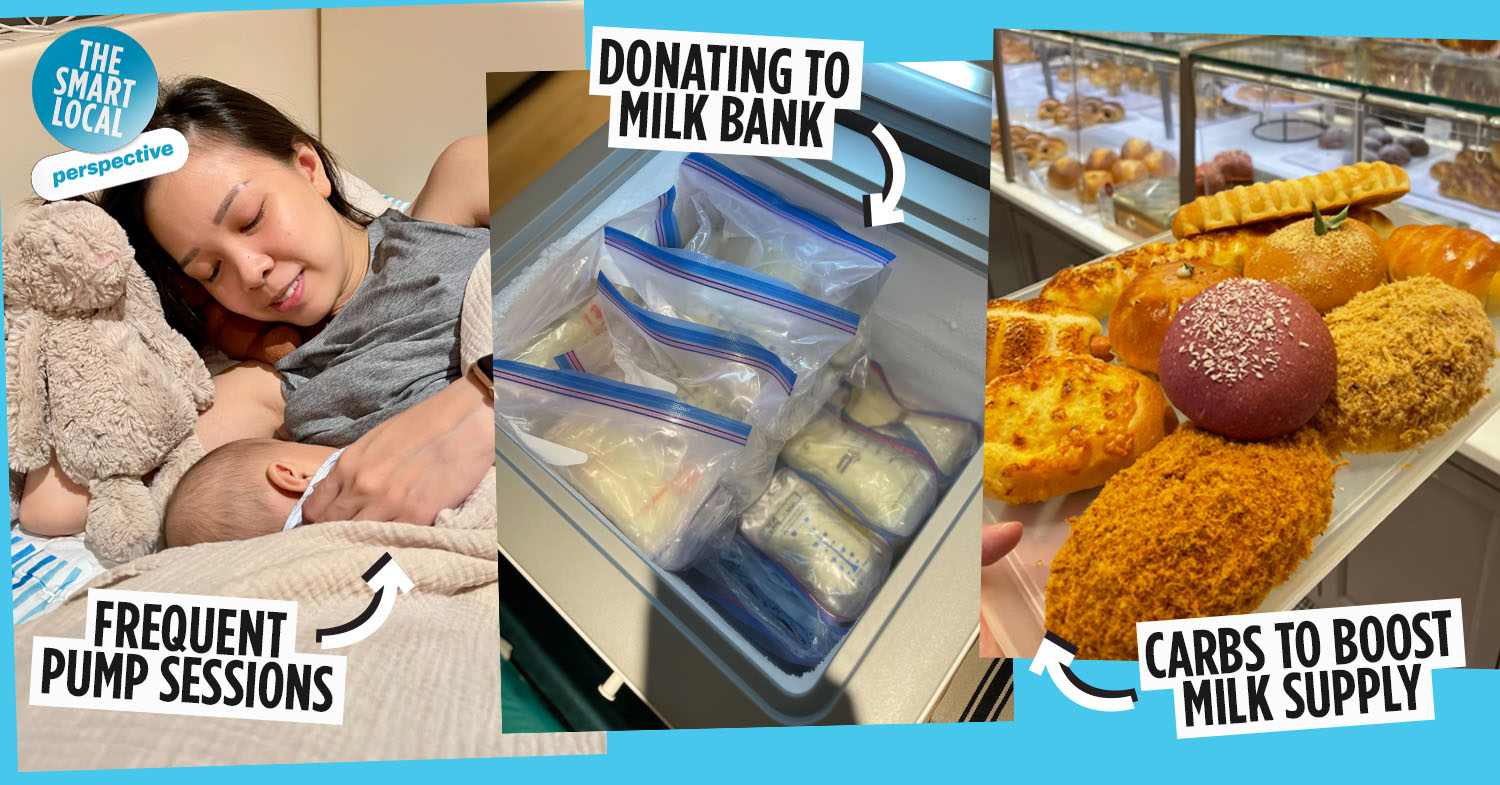Breastfeeding & pumping tips for Singaporean mums
Milk boosters, lactation massages, breastfeeding paraphernalia – these were some of the things I fervently researched in my third trimester. I had heard and read about the many benefits of breastfeeding, and as a first-time mom, I wanted to do everything in my power to breastfeed my child as soon as he was born.
Fearing undersupply, I latched my son every 2-3 hours as a newborn and pumped after every feed to boost my milk supply. Thankfully, all the hard work paid off as I quickly found myself as an oversupply mom making regular donations to KKH’s Human Milk Bank.
Whether you’re a newly minted mother looking to build up your milk stash before your maternity leave ends, or a fellow oversupply mum looking to reduce your pump sessions while maintaining your supply, here’s a list of tried and tested methods to help you out at any stage.
Table of Contents
Establishing and increasing your supply
1. Latch and pump after at least 7 to 8 times a day

Breastfeed as much as you can to signal demand
Image credits: @theeagertraveller
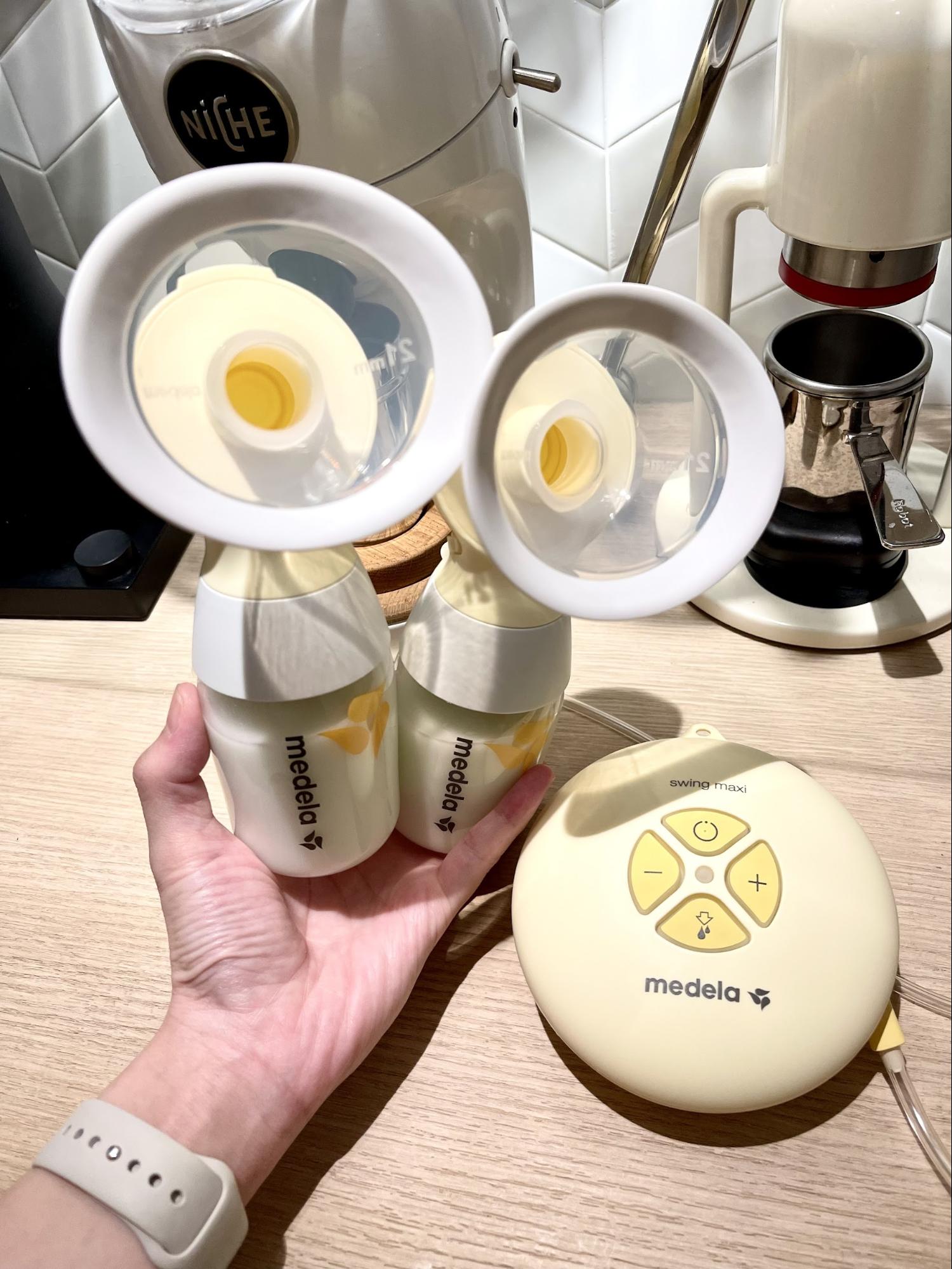
First few pump sessions
Image credits: @theeagertraveller
Newborns usually get hungry every 2-3 hours during their first month and to help stimulate supply, I responded to my son’s hunger cues by breastfeeding him every time he cried for milk. As one’s milk production is based solely on supply and demand, I added on a 10-15-minute pump session after each feed to signal to help stimulate the production of more milk.
I started my pumping journey with a manual pump before moving onto an electric pump once I was accustomed to the sensation. Initially, it was hard for me to gauge how much my baby was drinking or whether he was latching on properly during his first few days, so pumping helped ensure that breastmilk was being expressed.
Tip: When your baby is born, it’s more beneficial to latch or pump more frequently than to space them out. This may sound tough especially when you’re trying to recover during the fourth trimester but with perseverance and determination, you’ll be a step closer to establishing the milk supply that suits your baby’s needs.
2. Use an app to monitor your milk output when pumping
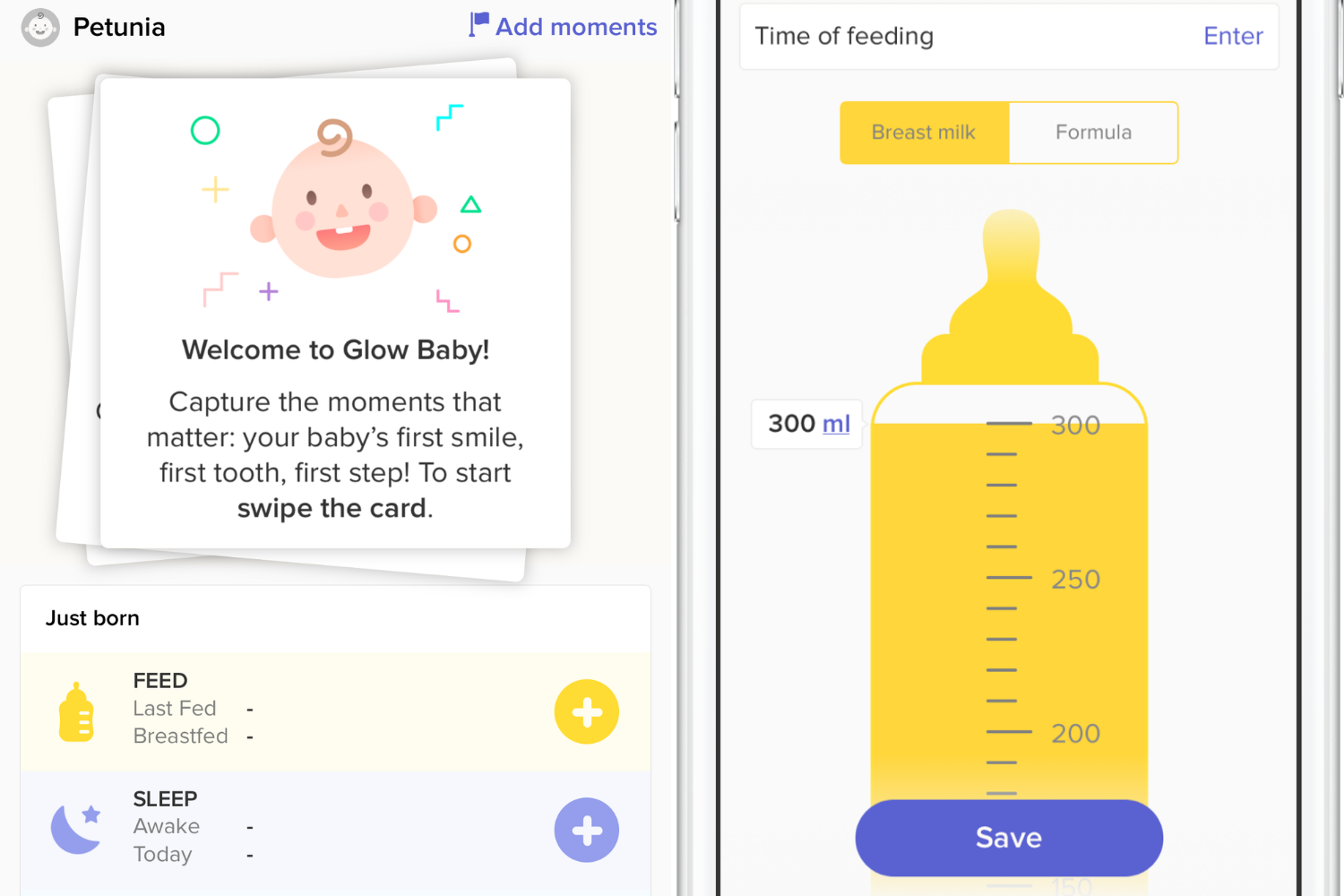
Image credit: Glow Baby
When you’re constantly switching between pumping and latching that many times a day, it can easily lose track of which side has yet to be drained or how much milk you’ve expressed so far. To make my life easier, I use the Glow Baby app to record all my pump session timings and output, along with breastfeeding duration and other baby-related data.
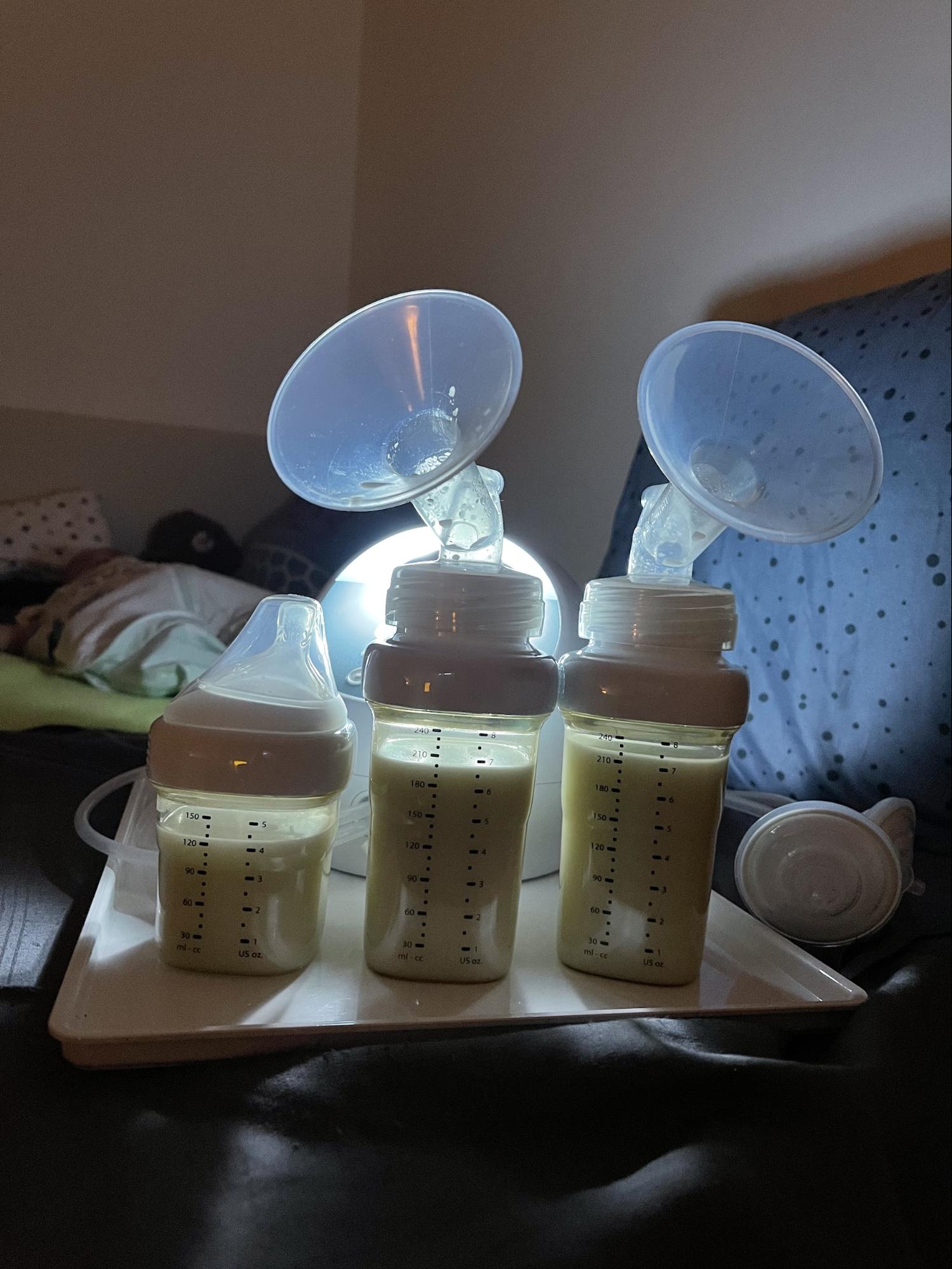
Middle of the night pump output
Image credits: @theeagertraveller
I also use the app’s free pattern chart to monitor changes in my milk output, which was really important as I gradually established my supply. It was also from this analysis that I noticed that my supply was the highest during pump sessions in the wee hours of the morning which was a good motivation for me to drag myself out of bed.
3. Add all-natural lactation foods to your diet
Breastfeeding burns a lot of calories so you might find yourself perpetually hungry. You’ll need to up your overall food intake to ensure your body has enough energy to make milk. As for myself, I increased my carb intake in the afternoons and found that to be beneficial to both my mental alertness and supply.
You’ve probably heard or read that there are also specific kinds of foods that you can consume to help boost your milk supply from the likes of carbs and lactation bakes. Of course, the effectiveness of these vary from woman to woman, so it’s really about finding what works for you.
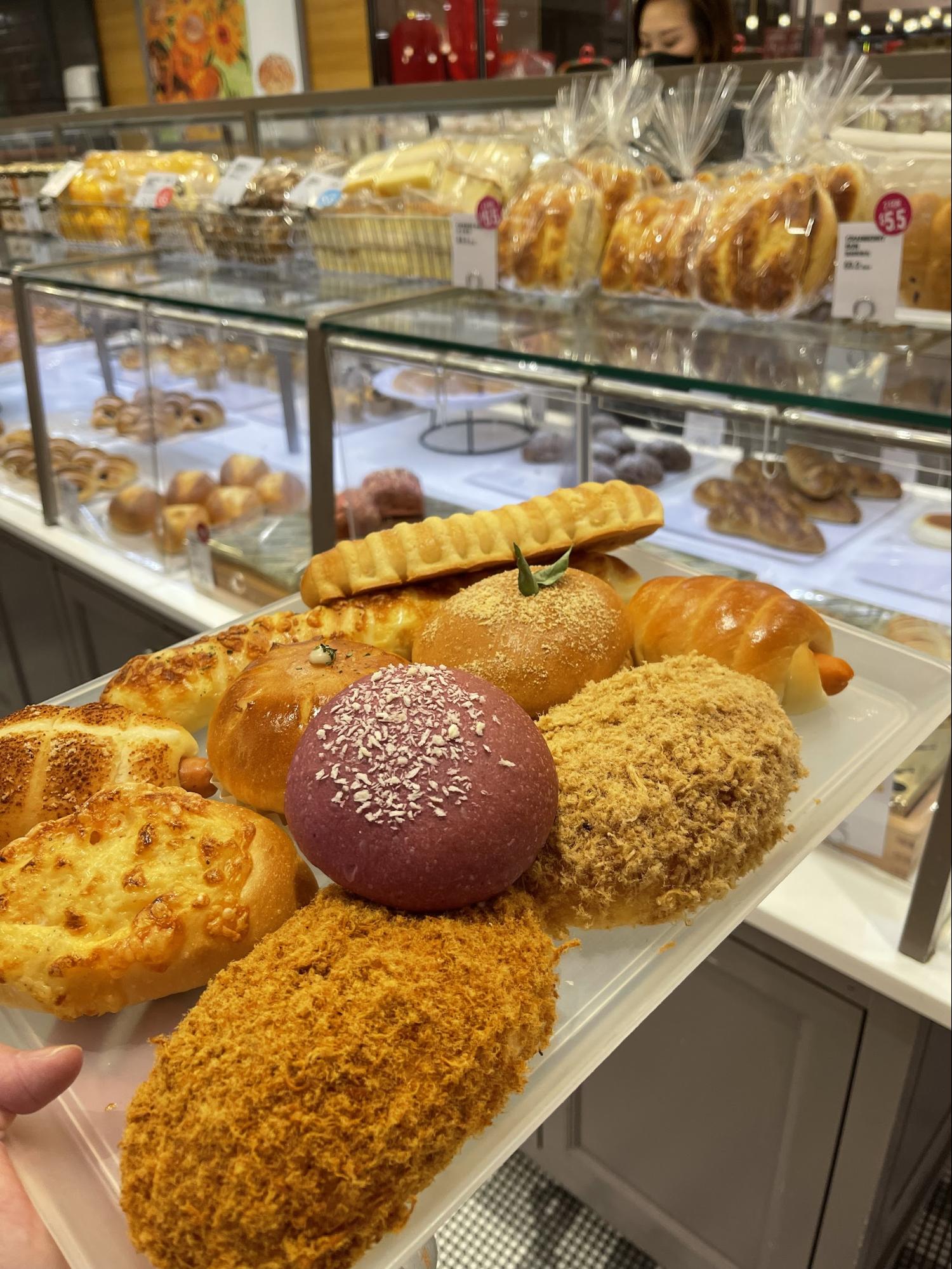
Weekly bread run
Image credits: @theeagertraveller
For starters, you can try out the following to help boost your supply: bread with healthy ingredients such as pumpkin as it’s known to be a natural source of DHA and alpha-linolenic acid that helps with supply.
As I became an oversupply mom early on in my breastfeeding and pumping journey, I consumed lactation bakes in small amounts. My favourites would be from Clookies and Becca Bakes – these are both tasty and nutritious. Even though I limited my intake of Clookies lactation bakes for a week, I still saw an increase by about 100-200ml in my total pump yield per day.
Their handmade bakes contain great milk boosting ingredients like flax seeds, brewer’s yeast, chia seeds and organic rolled oats. The superfoods in it such as chia seeds are rich in calcium, extremely important especially to us nursing moms. Flaxseed (ground) are equally nutritious and high in proteins and omega-3 fats. My personal favourite is their Cranberry Pistachio cookies which are quite addictive.
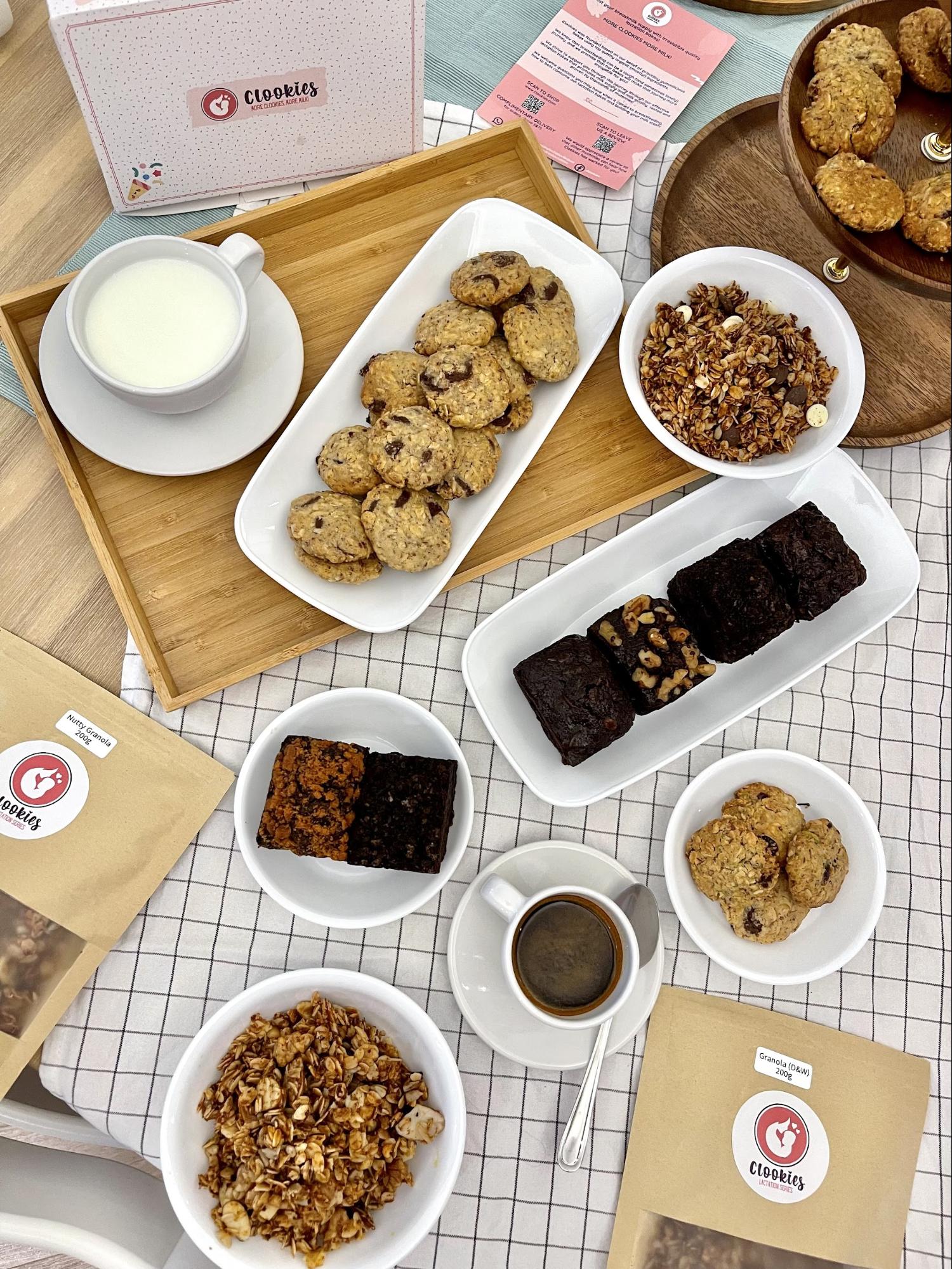
Breastfeeding the delicious way
Image credits: @theeagertraveller
Becca Bakes’ delectable fudgy lactation brownies are equally nutritious as these contain all the nutritious and milk booster ingredients such as coconut oil, flaxseed, brewer’s years, oats, wheatgerm and fennel seeds. The White Chip Macadamia was the one I liked the most and you can easily taste the coconut as soon as you take a bite.
If you’d like to go raw, you can also opt to fill your diet with the same milk-boosting foods such as sweet potato, papaya, oatmeal, barley, yoghurt, vegetables (i.e. carrots, ginger, asparagus, garlic) and different kind of seeds (i.e. fennel, cumin, poppy, fenugreek, sesame).
The Glow Baby app also comes in handy here as you’ll be able to track which foods aid your supply.
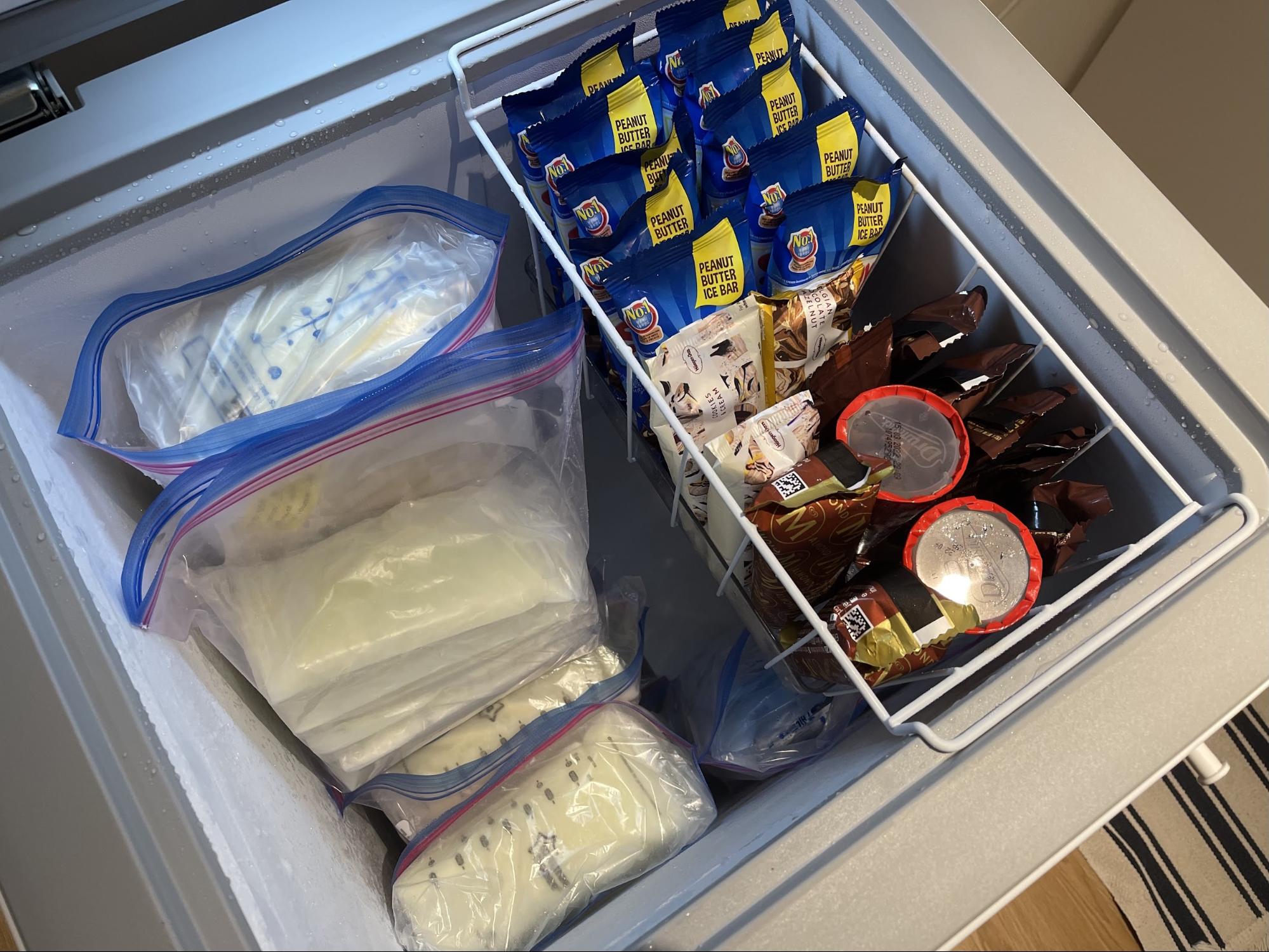
Image credits: @theeagertraveller
Lastly, I keep a stash of ice cream to keep me happy and motivated as we all know that breastfeeding and pumping is not easy and all the more we deserve to reward ourselves.
4. Gradually drag pump intervals when you’re happy with your supply
With each pump session ranging from 30 to 40 minutes, it takes up a lot of time and that’s time you could be spending playing or interacting with your child or just having that free time for yourself. So once I was comfortable with my milk supply, I intentionally and gradually dragged my pump intervals from eight down to three sessions a day.
My supply remained the same but the hours I spent pumping was cut by half. That also meant that I finally kicked the dreaded middle of the night pump sesh to the curb!
Dealing with oversupply
I first discovered that I was an oversupply mom when I noticed that my baby was struggling with my letdown. He was gulping too quickly and there was even a time that I saw a fountain of milk when he unlatched.
Occasionally, he would clamp down my nipple to try to stop the rapid flow of milk. There was a period that I felt each session was a battle as I struggled to feed my son without drowning him in my milk. I quickly confirmed this as soon as my milk supply stabilised, and I could see that my pump output was three times his demand.
If you too are struggling with oversupply, here are some tips to help you make the whole process a little easier:
5. Invest in a manual suction cup to save excess milk
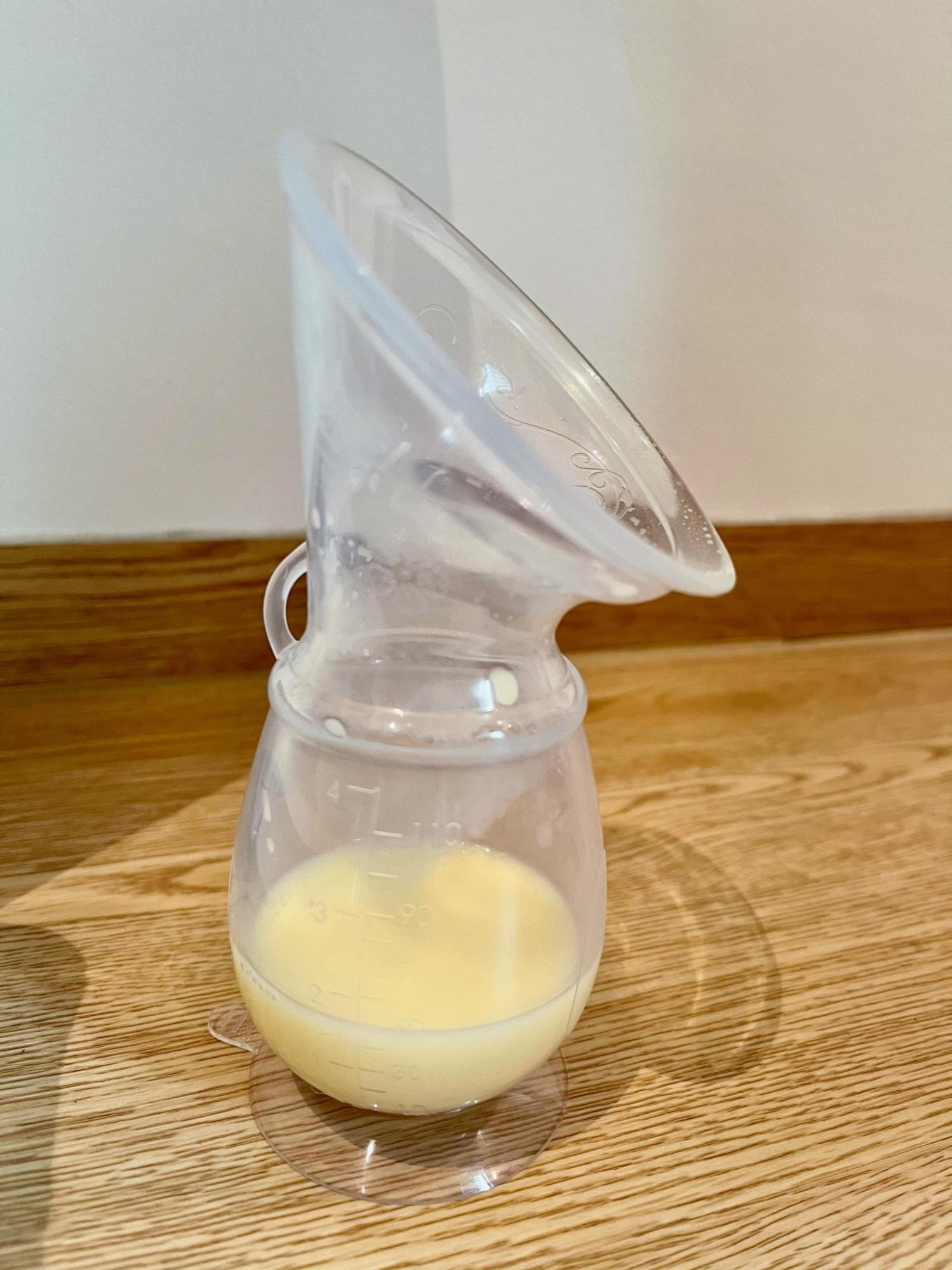
Manual suction pumps from the likes of the Haakaa are available on Shopee for cheap
Image credits: @theeagertraveller
If you’re one with a normal breastmilk supply, you’ll probably do well with milk catchers and nursing pads, but for oversupply moms might need more capacity to catch every drop of liquid gold flowing out of the non-feeding boob while you’re latching your baby on one side.
I found both the Haakaa Silicone Breast Pump and Hegen Manual Breast Pump to be extremely useful to help with collecting excess milk during and after latching my son. I’d attach the Haakaa silicone pump to me while I side-latched on the bed. And even then, after the feed, I’d use the Hegen manual pump to further empty both breasts for 10-15 minutes.
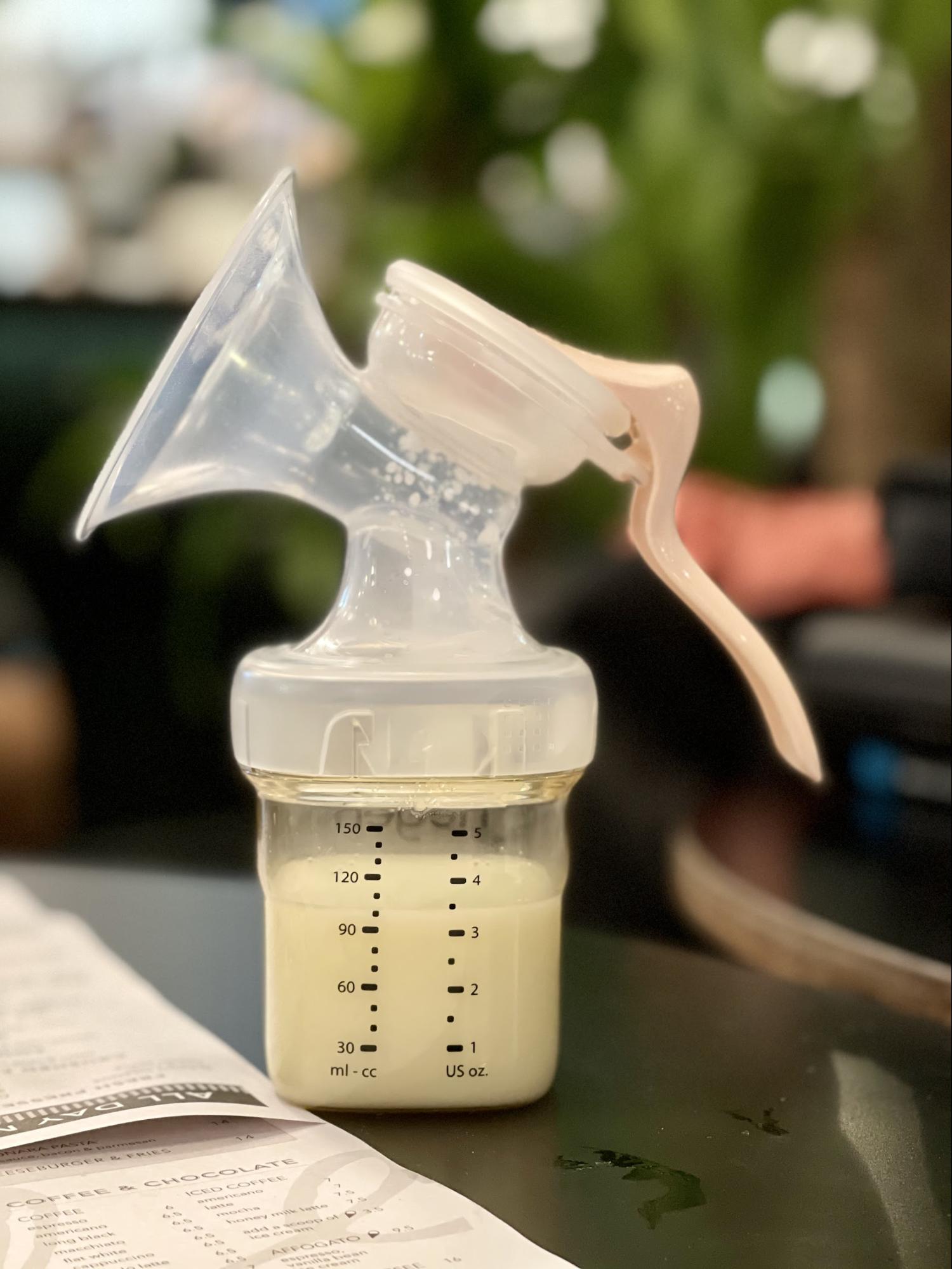
Pumping on the go
Image credits: @theeagertraveller
This was a good extra step in my routine even when I was out and about as I didn’t want to risk having a plugged duct.
6. Take sunflower lecithin supplements to help with clogged ducts & engorgement
Breastfeeding isn’t always a smooth journey, and plugged ducts can plague even those of us with normal supplies if we don’t empty our breasts vigilantly.
Oversupply mums are at higher risk of plugged ducts, so you’ll need to be extra prepared for these roadblocks. One way to avoid landing in the hospital because of dreaded mastitis is to be able to identify a clog as soon as possible.
Here are some things to look out for:
- Engorged, rock-hard breasts that are out of shape
- A painful lump in your breast
- Pain when you let-down your milk
As a preventive measure, I diligently take one tablet of Lecithin – a supplement known to make your milk less “thick and sticky” – in the morning. But even so, I’m still hit with a plugged duct every now and again.
This is what I do to troubleshoot:
- Increase my intake of Lecithin intake to three tablets a day
- Use an electric pump at the maximum settings (as long as you can endure)
- Follow up with a breast massager and a warm shower (massage in the shower if you will!)
If all else fails, I latch my baby and repeat the whole cycle again. Usually this works to clear the clog after one to two tries.
Tip: To avoid getting clogged ducts, avoid ill-fitting bras that are too tight.
7. Invest in a chest freezer & keep a milk inventory
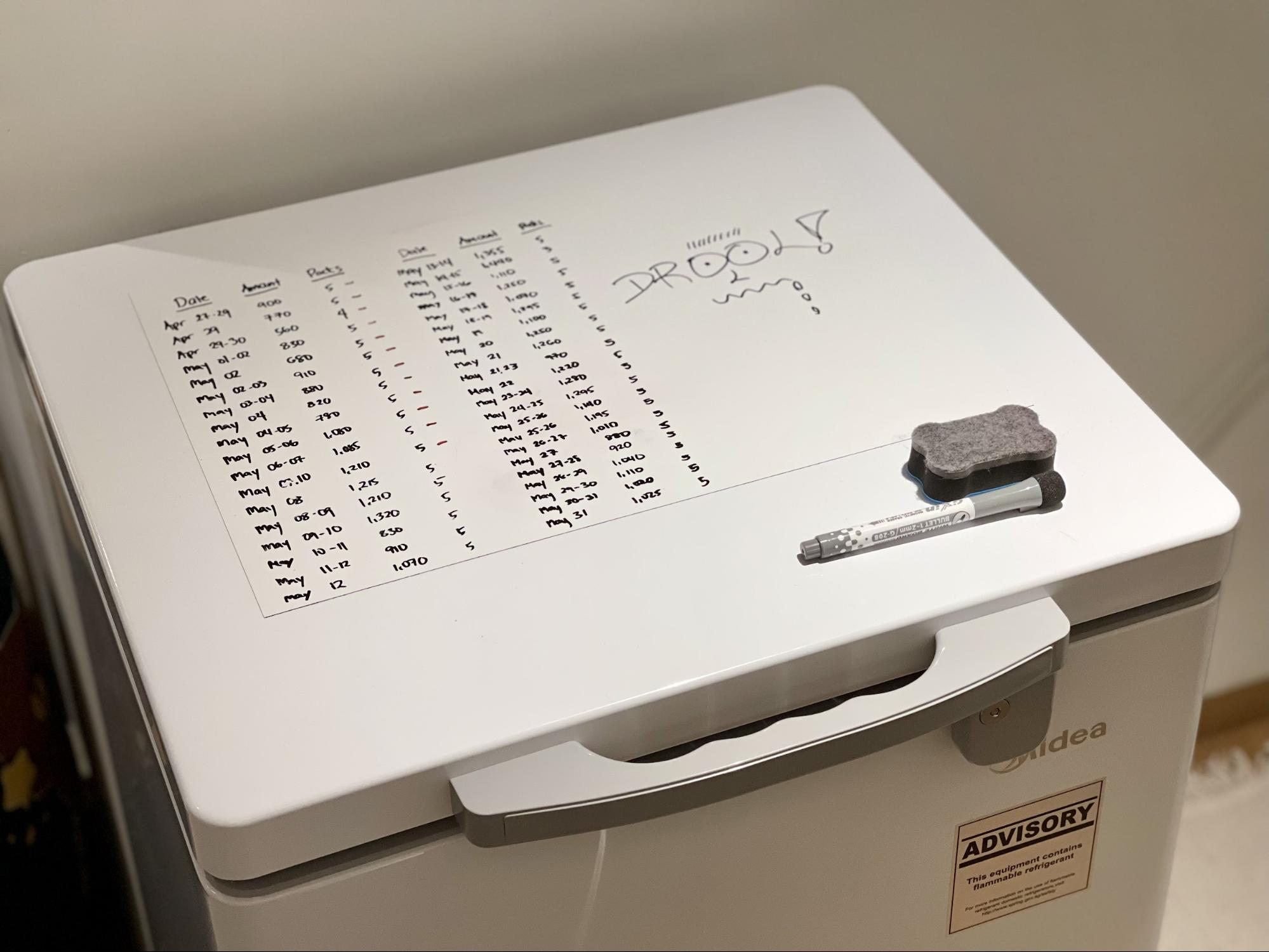
Inventory stash on top of the chest freezer
Image credits: @theeagertraveller
When you find yourself constantly running out of freezer storage, it might be time to consider a chest freezer. You can get the drawer or standing type; I chose the latter as it could store more. I just had to be smarter about how I organised and stored the breast milk bags to optimise storage and still be able to retrieve them easily.
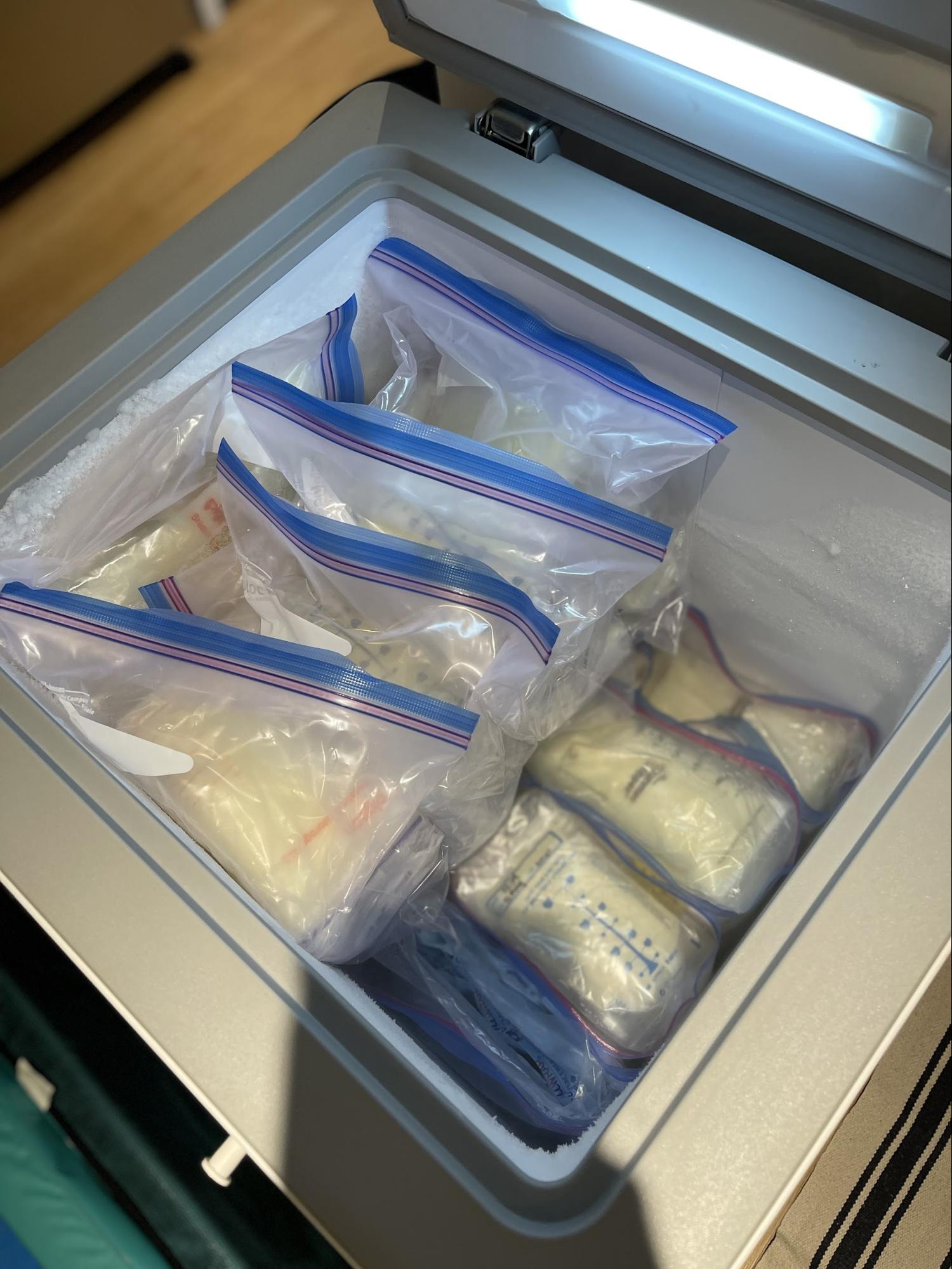
Gallon bags organised and labelled
Image credits: @theeagertraveller
I start with freezing my milk packets flat. What works for me is to fill up my fridge freezer first, then transfer everything into my chest freezer once my fridge is full. To organise my deep chest freezer, I place five to 10 packets in a reusable gallon bag. The gallon bags act as my “organiser” which I can just grab as and when I need them.
I also label each gallon bag with the volume, date and amount of packets inside then create an inventory of all the gallon bags I have and keep track with a magnetic whiteboard on top of the freezer.
Tip: Work out a system that works best for you whether it be transferring and organising the milk packets as you freeze each one or dedicate some time in the week to move them in bulk.
8. Consider donating to KKH Human Milk Bank
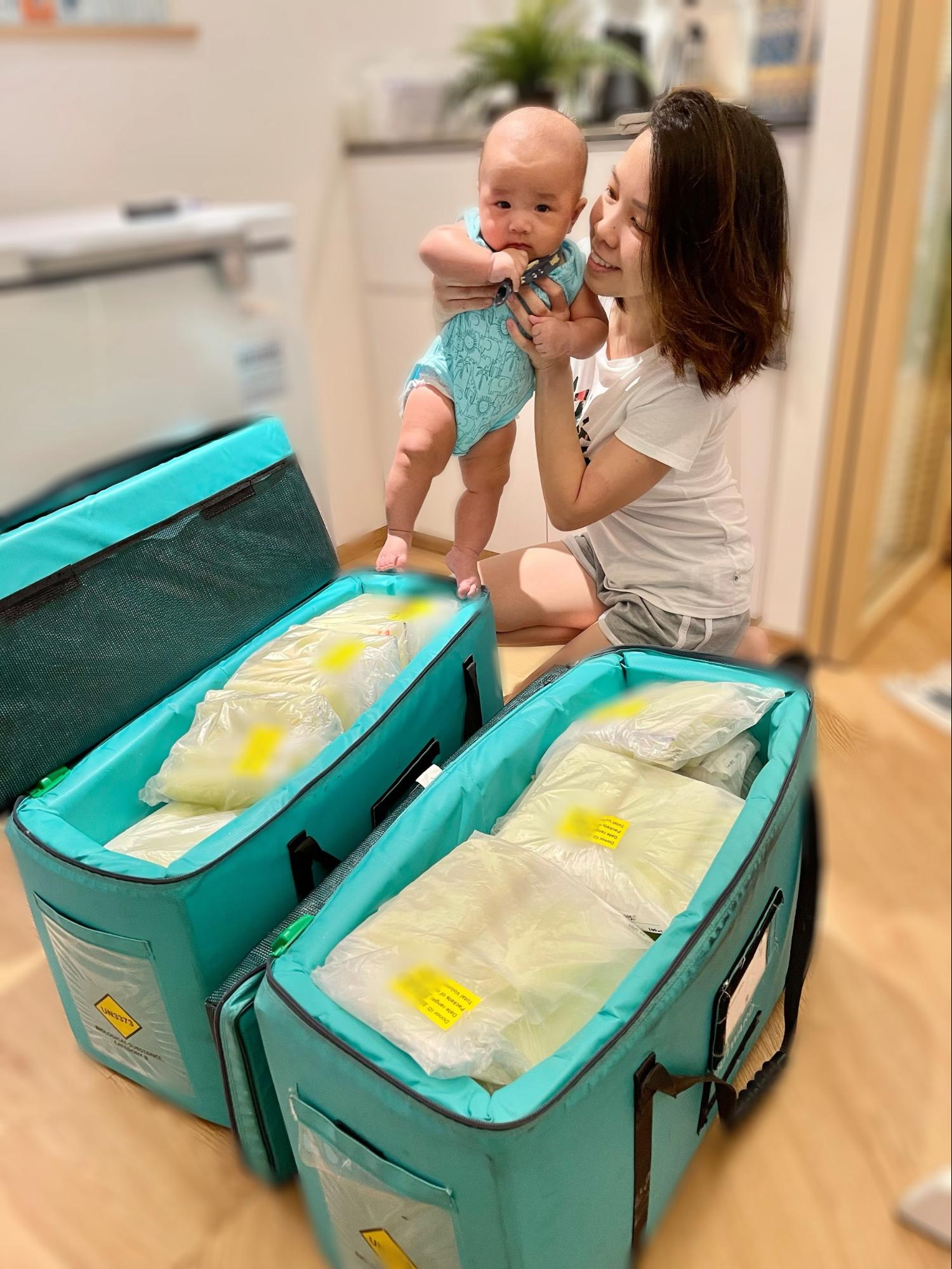
One of our biggest donations to KKH Human Milk Bank
Image credits: @theeagertraveller
Once you have a stash you’re comfortable with, you may consider donating the excess to the KKH Human Milk. The bank blesses the preemies and mothers who can’t provide breast milk to their babies due to medical conditions such as cancer due to the chemotherapy treatments.
To kick start your donation journey, call KKH Milk Bank and they’ll advise you on whether or not you’re a suitable donor based on their demand and your supply. If you fit the bill, you’ll have to head to KKH for a blood test where the hospital staff will go through their donation standards and guidelines.
Donors will receive storage bags in return and one free courier service per month for a minimum of 6 litres worth of breastmilk per trip.
A Singaporean mum’s guide to breastfeeding and pumping
Breastfeeding and pumping is a journey in itself so try to enjoy the moments because they won’t last forever. When you find yourself exhausted, remind yourself why and who you’re doing this labor of love for. Just know that your baby will be grateful to you regardless of the length that you choose to provide breast milk.
It takes a village to take care of a child so don’t be afraid to ask for help or take some time away for yourself. You are doing great and remember fed is best!
Also check out:
Cover image adapted from: @theeagertraveller
